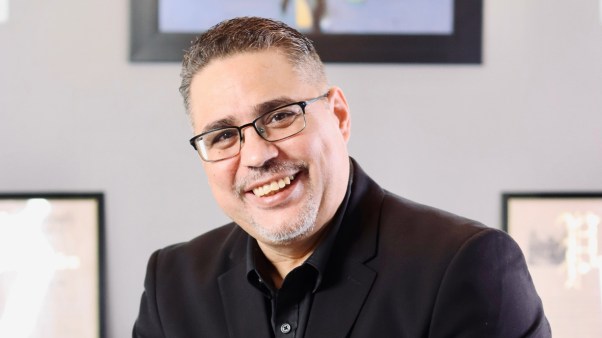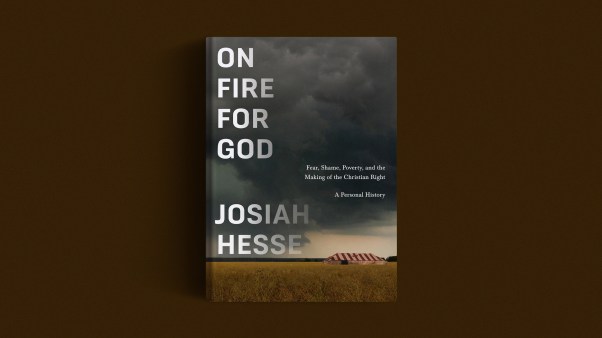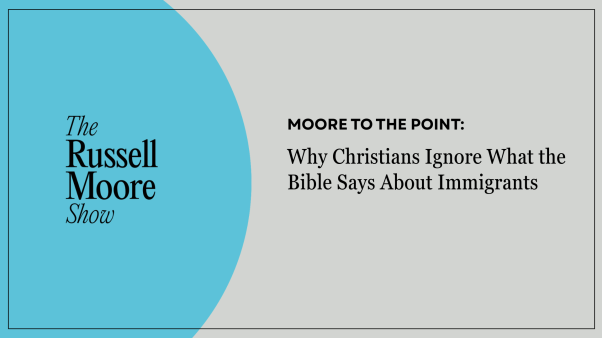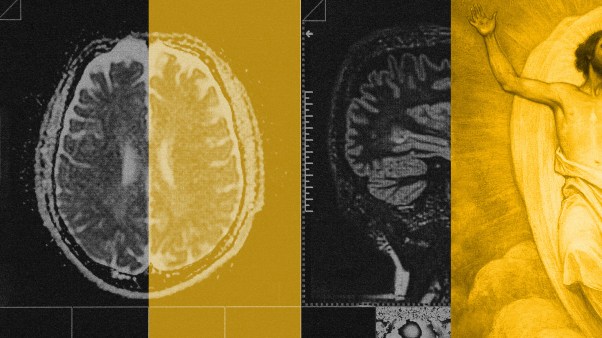Are health and wealth a divine right for believer
A blessing to some and a blight to others, the “faith movement” has survived some perilous moments in which extreme elements have caused controversy and created concern for Pentecostals, charismatics, and evangelicals.
In this essay, adapted from a chapter in the book Pentecostals from the Inside Out (recently released by CHRISTIANITY TODAY/Victor Books), Prof. James Goff explores the history and modern developments of this movement and surveys the ministries and lives of its key figures.
Nothing has prompted more debate within Pentecostal and charismatic circles over the last decade than the controversy over faith healing and Christian prosperity. Nicknamed by detractors as the “health-and-wealth” or “name it-claim it” gospel, the “word-of-faith” movement has successfully captured a vocal segment of the growing charismatic revival. Though the specific number of adherents is not known, it features some of the charismatic movement’s most powerful evangelists and largest multi-media ministries.
Heal The Sick
In short, the faith movement teaches that divine health and prosperity are the rights of every Christian who will appropriate enough faith to receive them. The secret of appropriating such faith is in making a “positive confession”—that is, stating in faith what one desires or is requesting from God and believing that God will honor it.
Pentecostals have long heralded divine healing as a cardinal doctrine. Indeed, divine healing was an important part of the nineteenth-century holiness movement and was one of the central elements of the early Pentecostal revival.
As a result of the holiness movement, denominations as diverse as Episcopal and Baptist incorporated evangelists who championed the cause of healing by faith. Evangelical revivalist Charles Finney was himself an avid supporter. Finney argued that if a Christian “prays for a definite object,” “prays in faith,” and “expects to obtain the blessing,” then “faith always obtains the object.”
By the late nineteenth century, healing had become an integral part of the theology of many who frequented holiness meetings. The healing ministries of Episcopalians Charles Cullis and Carrie Judd Montgomery, Presbyterian Albert Benjamin Simpson, and Baptist Adoniram Judson Gordon proclaimed that in the atonement of Jesus Christ, God had provided a way of dealing with everyday struggles with illnesses.
Early Pentecostals were influenced by the mainstream theology of such leaders as A. J. Gordon and A. B. Simpson; at the same time, they were intrigued with the charm and apparent success of itinerants like John Dowie, an Australian faith healer who preached an extreme form of the healing message, advertising authentic healings as always instantaneous and utterly denouncing the use of doctors and medicines. Though Dowie was himself an outspoken opponent of the Pentecostal revival, his uncompromising denunciation of the sin of “worldliness” placed him well within Pentecostals’ understanding of inspired preaching.
While Dowie seemed dangerous to many in the mainstream of the healing movement, he came across as an uncompromising prophet to the bulk of Pentecostals, who were outside the mainstream and formed separate denominations from their holiness brethren during the first two decades of the twentieth century. They adopted a message of radical faith in God to heal their diseases without benefit of doctors or medicines.
The excesses of independents like Dowie and the desire to separate themselves from controversial Pentecostals forced most mainstream evangelicals to stay away from any emphasis on healing. It was no coincidence that the rise of Pentecostalism followed the decline of mainstream healing theology.
Getting Rid Of The Devil
All Pentecostal denominations included divine healing in their theology to interpret it as setting the stage for Christ’s second coming. The signs and wonders that would be wrought by this newfound power, they believed, would bring about an end-time revival to win the lost and prepare the world for the end of the present age.
Charles Parham was the single most-important individual in the rise of the Pentecostal movement. His reputation as a small-time faith healer preceded his initiation of Pentecostalism; yet his newfound doctrine did not negate his earlier belief in the divine origins of healing. Like Dowie, Parham believed a cure would come if the seeker would appropriate a radical faith in God’s desire and ability to heal. He often denounced doctors and medicines, and chided his followers, “Friends, we will never get rid of the devil until we quit this everlasting nursing of our diseases.”
Like Parham, all subsequent Pentecostals held a fervent belief in divine healing. Although all did not explicitly denounce medical science, they did believe that the failure to be healed was a problem with appropriating enough faith. Early Pentecostals understood that, while medical practice was not forbidden, it was not the preferable way to secure healing.
Within early Pentecostalism, adherents recognized that healing generally occurred through the “laying on of hands” by the elders of the church (James 5:14–15). In this model, the prayer of faith by the individual was bolstered by the prayers of the community—thus effecting a successful cure. A second model, the “gift of healing” (1 Cor. 12:9), was also recognized: the healing touch was granted to one specific individual, endowed with an extraordinary power. In all healings, the faith of the recipient was required for a successful outcome.
It was, however, the second model, the “gift of healing,” that ultimately led to the most explosive period of healing revivalism in American history, both in terms of rapid growth and controversy. Nationally known Pentecostal evangelists such as William Branham, Oral Roberts, Asa A. Allen, and Jack Coe traversed America during the 1950s holding tent revivals. Although second-generation Pentecostals were not prone to the absolute position of their parents that all believers would be healed, yet, more than in any other period, the theology and practices of the healing revival prompted wide publicity and exposure.
Turning Dollar Bills Into Twenties
A firm belief in divine healing is not the only tenet of the faith movement. The belief that faith in God met all human needs led invariably to concern about the material needs of believers. Many early Pentecostal schools were run on the faith principle. They offered their courses without set tuition, running on a shoestring budget that required frequent prayers and fasts to carry the institutions through crises.
Nevertheless, the belief in God’s concern for and ability to meet day-to-day needs was tempered by the believers’ mistrust of wealth. More often than not, they sprang from humble roots and deplored the affluent environment of the mainline denominations. For most, God’s assurance to meet needs did not translate into material prosperity.
More overt claims on God’s ability to answer financial prayers came when the pressing financial needs of the evangelists brought a greater emphasis on the need for giving and, with it, God’s promise to bless the cheerful giver. Some, such as A. A. Allen, blatantly portrayed a God who specializes in financial miracles. He spellbound his audiences with an account that God once answered his prayer to meet a $410 printing bill by turning the one-dollar bills he had into twenty-dollar bills. “I can command God to perform a miracle for you financially,” Allen said. “When you do, God can turn dollar bills into twenties.” Allen’s explanation of the miracle was a clear pronouncement of the prosperity doctrine that would begin to flourish in the charismatic congregations of the 1960s.
Enter Kenneth Hagin
The individual most responsible for the spread of faith theology among charismatics is evangelist Kenneth Erwin Hagin, Sr. Born in McKinney, Texas, in August 1917, Hagin struggled through a series of debilitating circumstances. Born prematurely with a congenital heart defect, he weighed less than two pounds at birth. After surprising the attending physician by surviving, Hagin endured a painful childhood, during which he failed to outgrow the physical problems that plagued him at birth. By age 16, he was bedridden, physically paralyzed, and sometimes unable to maintain consciousness.
While in this state, Hagin began to experience a dramatic inward trauma. On three separate occasions, he believed his spirit slipped from this world, leaving his lifeless body lying on the bed, and descending into the literal pit of hell. Each time, as his spirit trembled at the fires of hell and the loneliness of outer darkness, he was suddenly snatched from the depths of the pit by the voice of God himself and allowed to re-enter his body. When he returned the third time, he prayed loudly for God to forgive him his sins.
During the months that followed, Hagin began a period of intense Bible study and prayer in which he focused on Mark 11:24: “What things soever ye desire, when ye pray, believe that ye receive them, and ye shall have them.”
Though still near the point of death, he prayed for God to heal him. Finally, after 16 months of lying bedfast—praying and studying Mark 11:24—Hagin believed he had made a remarkable discovery, and his dramatic experience is recounted in I Believe in Visions. In that book, he says, “I saw exactly what that verse in Mark 11:24 meant.… The having comes after the believing. I had been reversing it. I was trying to have first and then believe second.… ‘I see it. I see it,’ I said with joy.”
Hagin’s discovery culminated in a radical faith that marked his understanding of what he called “the principle of faith”: “Believe in your heart, say it with your mouth, and ‘he shall have whatsoever he saith.’ ” Exercising his newfound “faith formula,” Hagin got up out of his bed, “declared that [he] was healed and that [he] was going to walk.” For the next few days he walked privately around his room; by the end of the week, he was walking downtown.
Hagin’s miraculous recovery launched his ministry, and his firm belief in divine healing placed him in Pentecostal circles. By 1937 he had received “the baptism of the Holy Spirit” and joined the Assemblies of God. After pastoring Assemblies churches in Texas for 12 years, Hagin embarked on an independent ministry that would ultimately seal his place as the most prominent faith teacher in the coming charismatic revival.
After having already stepped out as a “teaching” evangelist within the Pentecostal healing revival, an intense religious experience convinced him that he was also anointed as a prophet. Significantly, Hagin believed he had conversed with Jesus during eight visions from 1950 to 1963 about the direction for his ministry and the proper interpretation of certain Scriptures.
The emphasis on “positive confession” and the power of individual faith gradually established a separate identity for Hagin’s ministry. In 1962, he launched his own evangelistic association. Moving his headquarters to Tulsa, Oklahoma, in 1966, Hagin’s ministry began a meteoric rise. Riding the crest of the fast-growing charismatic movement, he became by the early 1980s one of the nation’s best-known evangelists. His daily radio program was carried on 180 stations in the United States and Canada, his monthly Word of Faith magazine enjoyed a circulation of 200 thousand, and his $20 million Rhema Bible Training Center enrolled almost two thousand students.
The Problems With “Positive Confession”
Hagin and the other faith teachers have faced increasing criticism for their theology. On one level, their teaching is a restatement of the more extreme positions on divine healing and prosperity within the Pentecostal tradition. On another level, however, there is a third essential component of the faith movement that is not found in early Pentecostalism. While Pentecostals were convinced that God had the power and the desire to heal their diseases and meet their needs, they were less sure they had the right to claim healing and financial security in the face of evidence to the contrary.
However, charismatic faith teachers argued that seekers did not have their prayers answered because they failed to confess positively their triumph in the face of defeat. The result was a heavy emphasis on the ability of the believing Christian to effect control over his own situation.
More than any other single element, “positive confession” has drawn fire from within Pentecostal and charismatic camps. Critics argue that the language and implications of the faith teachers lends itself to a heretical view that God’s will becomes dependent on us—God being reduced to a kind of “cosmic bellhop,” attending to the needs and desires of his creation. The result is human pride and a faulty view of both the purpose for, and the relationship between, God and believers.
Critics not only accuse the faith teachers of distorting Scripture by taking verses out of context to prove their theology but also point out that there is an explicit rejection of believers who do not get healed or suffer the indignity of poverty, since the only assumption can be that they fail to appropriate faith in God to remedy their situation. More serious is the charge that the rejection of medical science or even the tacit implication that such support is an “inferior” sort of healing leads believers into dangerous situations where they refuse to seek medical help for diseases.
Such fears seemed realized in 1984 when a storm of publicity surrounded the death of a 15-year-old girl whose parents had refused medical assistance on counsel from faith teacher Hobart Freeman. The girl subsequently died of kidney failure, and physicians agreed the death could have been prevented with proper medical treatment.
Freeman’s indictment on a charge of “aiding and inducing reckless homicide” fueled the fire of national attention, as critics charged that some 90 deaths within Freeman’s small circle of Faith Assembly churches had their roots in his teachings. When Freeman died unexpectedly in December 1984, his part in what might have been a national-trial drama was abruptly ended; nevertheless, the furor over the dangers inherent in faith theology remained high within Pentecostal and charismatic circles.
Faith teachers have answered their critics in a variety of ways. All major leaders of the movement denounce the position of extremists. They teach that medical science in and of itself is not evil and urge followers to seek medical advice if they have any doubt as to their faith. Hagin points out that there are no “iron-clad rules” in dealing with individuals. While “God’s best is that we be healed by divine power,” individual ability to believe will mean that “not everyone will attain to the best.” Leaders like Hagin also argue that their teachings are simply God’s Word and cite a number of scriptural “proof texts” on their behalf.
Health And Wealth Today
The faith movement grew extensively in the 1970s because of the rapid expansion of the charismatic movement. Attracted by its biblical literalism as well as its promise of the supernatural in the church’s everyday life, many young, educated, affluent charismatics climbed on the bandwagon. With scientific studies validating the beneficial effects of positive meditation and prayer, and President Jimmy Carter’s sister, Ruth Stapleton, a visible exponent of divine healing, the faith movement picked up many who, in earlier years, would merely have scoffed at its claims.
Television exposure also played a role in the new success. Media ministries flooded the airwaves with religious talk shows and devotionals. The new charismatic ministers took prime advantage of these opportunities; once in the living room, they benefited from the power of television.
Finally, the faith message enjoyed the effects of prosperity among the old-line Pentecostals. Joining the charismatics who embraced the faith message was a significant number of third- and fourth-generation Pentecostals whose economic status had risen as a result of educational gains during the postwar era. The newer churches offered them the emotional worship style of their parent denominations in a socio-economic climate that better fit their new situation.
However, controversy over the faith movement continues to brew. Critics outside of the charismatic movement often accuse the faith teachers of outright charlatanry. Specifically, they point out that faith theology gives all the credit for miraculous cures to the faith teacher and places all blame for failure on the “unbelieving” seeker.
More important to the future of the faith movement is the criticism from within the charismatic movement. While some believe that the faith teachers have moderated their more extreme positions in the wake of the Hobart Freeman debacle, others express their doubts. The result is a debate over the merits and dangers of the movement.
It seems certain that the faith movement will survive. Yet the power and credibility of the movement has always been tied to the fortunes of the larger charismatic movement. As tensions continue to break out, the possibility of a break from other Pentecostals and charismatics increases. Such a break would render the faith movement a small fish outside its natural spawning ground. Such a break would follow a long-standing pattern in American religious history by further splintering the increasingly heterogeneous charismatic revival.









